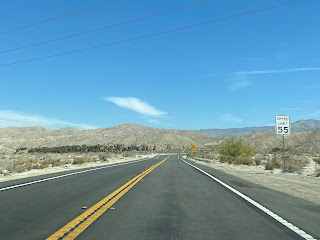Thousand Palms Canyon Road is a four-mile highway which is located in Indio Hills of Riverside County. Thousand Palms Canyon Road is named after the Thousand Palms Oasis which is home to a grove of Californian Palms. Thousand Palms Canyon Road begins at the intersection of Washington Street/Ramon Road and ends at Dillon Road.
Part 1; the history of Thousand Palms Canyon RoadThousand Palm Canyon Road lies in a fold in the Indio Hills which is filled with native Californian Palm Trees (Washingtonia filifera). The Californian Palm Trees of the Indio Hills grow in lands which water is pushed to the surface by the nearby San Andreas Fault. The Indio Hills are home to the Thousand Palm Oasis of the Coachella Preserve for which Thousand Palm Canyon Road is named.
Thousand Palms Canyon Road was constructed as a haul road to the Colorado River Aqueduct site north of the Indio Hills. The Colorado River Aqueduct spans 242 miles from Parker Dam on the Colorado River west to Lake Mathews near Corona. Construction of the Colorado River Aqueduct began during January 1933 near Thousand Palms and was made functional on January 7, 1939.
The intersection of Thousand Palms Canyon Road and Dillon Road can be seen in a photo dated to 1934 (
courtesy Carl Schulz). A sign can be seen directing traffic to Thousand Palms Camp. Thousand Palms Camp was developed during the 1930s by Paul Wilhelm. Wilhelm constructed the cabin which is now the headquarters of the
Coachella Preserve.
Thousand Palms Canyon Road and the Thousand Palms Oasis can be seen on the 1944 United States Geological Survey Map of Edom.
Part 2; a drive on Thousand Palms Canyons Road
Thousand Palms Canyon Road northbound begins via a right-hand turn from Washington Street.
As northbound Thousand Palms Canyon Road begins the Willis Palms Trail and grove can be seen.
Northbound Thousand Palms Canyon Road passes by the Coachella Valley Visitor Center.
Northbound Thousand Palms Canyon Road terminates at Dillon Road. Thousand Palms Canyon Road sometimes appears on older United States Geological Survey maps continuing north of Dillon Road to mining claims at Fan Hill near the boundary of Joshua Tree National Park.















Comments